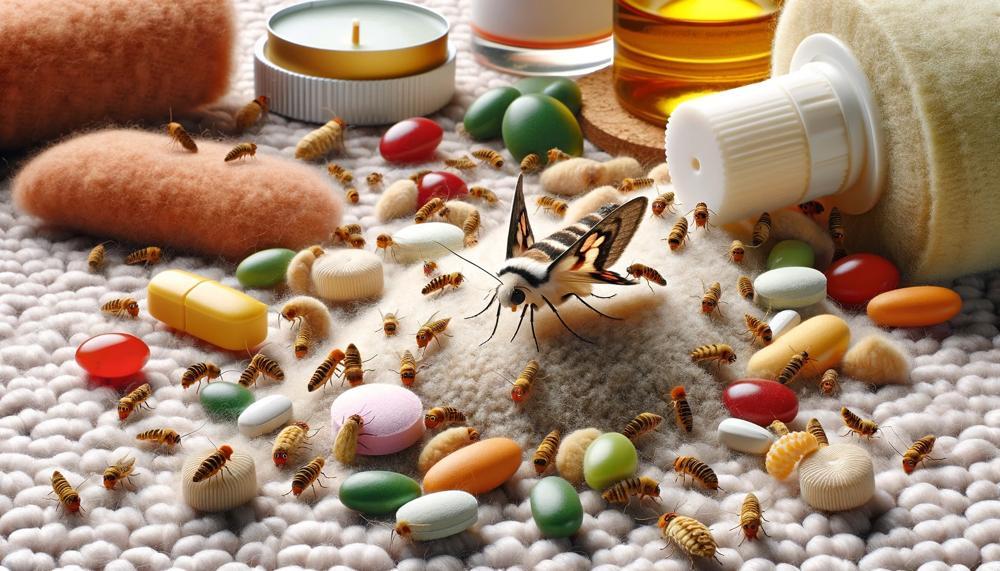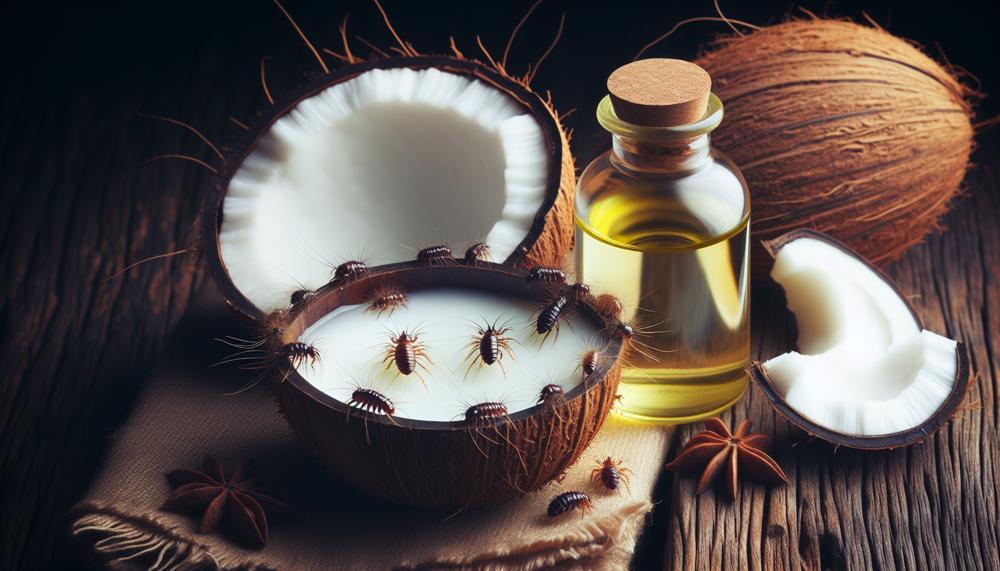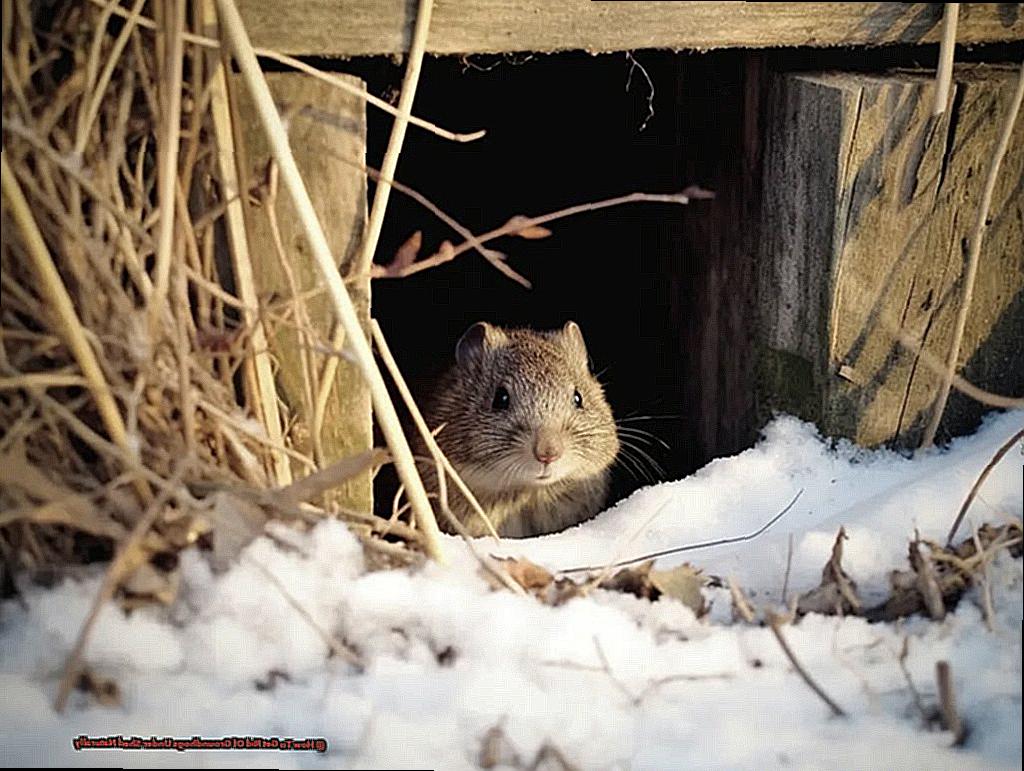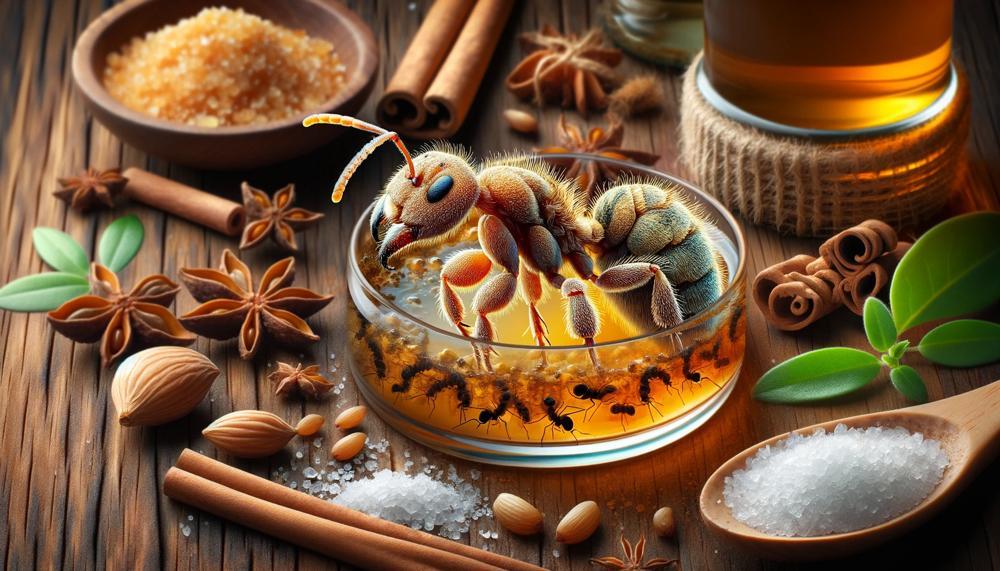Did you know that a female carpet moth can lay up to 200 eggs every year? That’s a shocking fact that shows how quickly a small problem can turn into an entire invasion that destroys your favorite rugs and furniture. Even though carpet moths are small, they can do a lot of damage because their larvae eat natural fibers in clothes, rugs, and other home textiles.
Doing something about them isn’t just a matter of keeping your home clean; it’s also a matter of keeping your expensive things looking good and lasting longer.
In the fight against these annoying pests, many people are looking for better, more eco-friendly alternatives to harmful treatments. People are becoming more aware of how harmful strong chemicals are to our health and the environment, which is why this change is happening.
Natural remedies are plentiful and safe, so we can use them to fight carpet moths without sacrificing their effectiveness.
So, how do you get rid of carpet moths naturally naturally?
Here are some grass-based ways to get rid of moths:
- Vinegar: Because vinegar is acidic, it can kill moth eggs and get rid of their scents. Spray a vinegar and water mixture on most fabrics, but first test it on cloth colors. More acidic fabrics don’t attract moths, so you can mix white vinegar and bicarbonate of soda together.
- Lavender: Pour a few drops of lavender oil into a spray bottle full of water. Shake it up, and then lightly spray your clothes and rugs.
- Steam: It is possible for steam to kill moth eggs. You might want to buy a cleaner if you have a lot of infestations or ones that last a long time.
- Vacuum: By vacuuming often and using strong suction, you can get rid of eggs and larvae. Clean the walls, under the furniture, and other hard-to-reach places with a vacuum.
- Ventilate: Let in as much light as you can, and move furniture away from the walls so you can clean under it.
So, let’s get started.
Table of Contents
Webbing Clothes Moth
The Webbing Clothes Moth, a diminutive yet formidable pest, wreaks havoc on clothing and carpets primarily through its larval stage.
| Characteristic | Description |
| Appearance | Adults display golden or buff forewings with lighter, silvery hindwings. Notably, they possess three dark spots on their wings arranged in a triangular pattern. When at rest, their wings fold roof-like over their bodies. |
| Habitat Preferences | Preferring the shadows, these moths opt for dark, undisturbed areas such as closets, wardrobes, and storage spaces. They have a penchant for woolens and other natural fabrics. |
| Life Cycle | Their cycle unfolds in four stages: egg, larva, pupa, adult. It’s during the larval stage that they are most destructive, feeding voraciously on natural fibers. |
| Method of Damage | Larvae nibble on clothing and carpets made from natural fibers such as wool, silk, and fur. They can chomp through layers, leaving behind holes and damaged fibres. |
| Detection and Prevention | Early detection is key; regular inspections for signs of infestation can nip problems in the bud. Good housekeeping practices, such as vacuuming and proper garment storage, alongside using moth repellents are effective preventative measures. |
The larvae are particularly notorious for their appetite for natural fibres found in clothing and carpets. They not only consume but also contaminate items with their webbing and excrement, exacerbating the damage.
Not merely satisfied with feasting on exposed fabrics, they’ll delve into cracks and crevices to reach stored items or less frequently disturbed areas of carpets. This predilection makes them formidable opponents in the battle to protect your belongings.
To combat these stealthy critters, vigilance is paramount. Regularly cleaning and airing out spaces deprived of sunlight can dissuade moths from settling in.
Additionally, employing natural deterrents such as cedarwood blocks or lavender sachets provides a two-fold benefit: repelling moths while imparting a pleasant aroma to your wardrobes and drawers.
Locate The Infestation
Identifying the presence of carpet moths in your home is akin to piecing together a puzzle where the clues are subtle yet telling. Here’s how to spot these unwelcome guests before they wreak havoc on your carpets.
Visual Inspection
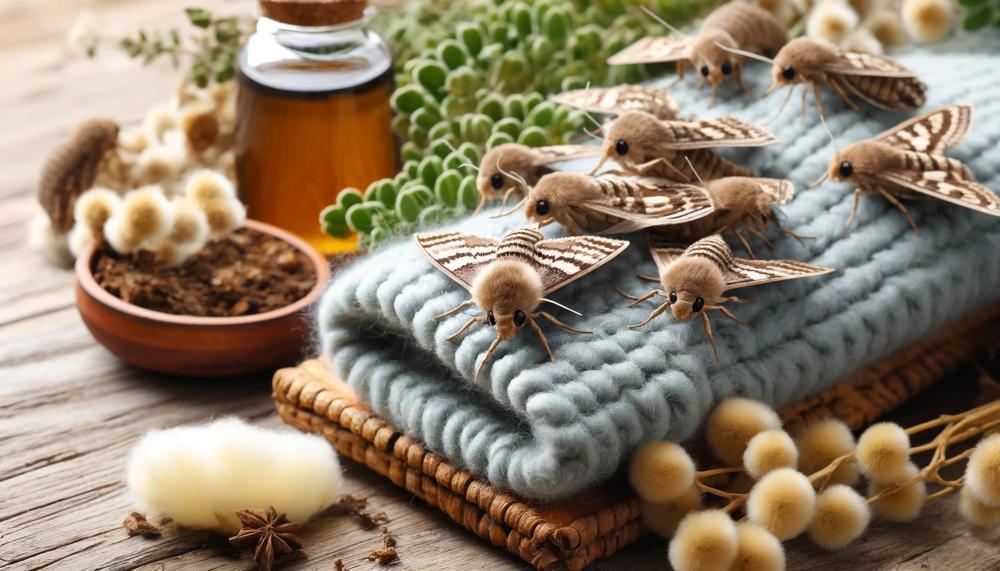
First off, keep your eyes peeled for the adult moths themselves. They’re not fond of the limelight and prefer the shadows, but you might catch them fluttering about.
They’re small, with a wingspan of about 14-18 mm, and their color can range from mottled beige to a silvery-brown.
Tell-tale Signs of Larvae
The larvae are the real culprits behind the damage. These tiny caterpillar-like creatures feast on natural fibers and leave behind a trail of destruction. Look for:
- Bare patches on carpets, especially in undisturbed areas under furniture or along skirting boards.
- Silken tunnels or mats, woven by the larvae as they munch through your carpets.
- Faecal pellets, which look like small grains of sand.
Evidence of Damage
Carpet moths have a taste for keratin, found in natural fibers like wool, silk, feathers, and fur. This preference means synthetic carpets aren’t typically on their menu but don’t rule them out entirely; contamination from natural fibers can still attract them.
| Sign | Description | What to Look For |
| Flying Moths | Adult carpet moths | Small brown bugs fluttering around the house. |
| Larval Damage | Damage caused by larvae feasting on carpets. | Bare spots, silken tunnels, faecal pellets. |
| Holes in Carpet | Visible signs of moth infestation. | Irregular holes or thinning areas in your carpet. |
Wash All Fabrics
Washing fabrics plays a crucial role in the natural eradication of carpet moths, striking at the heart of their lifecycle by targeting the fibres they find most appetizing.
The allure of natural fibers like wool, fur, and hair for carpet moths isn’t just a preference; it’s a survival mechanism. These materials provide the essential keratin needed for their larvae to thrive.
By removing the sweat, dead skin, and pet dander that accumulates on these fabrics, one essentially cuts off the food supply, making the environment less hospitable for moth larvae.
Why Washing Works:
- Interrupts Lifecycle: Regular washing of fabrics, especially those made from natural fibers, interrupts the lifecycle of carpet moths by removing eggs and larvae before they can mature.
- Eliminates Food Source: Moth larvae feed on keratin found in natural fibers. Washing these items removes the keratin-rich residues (like dead skin cells and pet hair), starving the larvae.
- Deters New Infestations: Clean fabrics are less attractive to adult moths looking for a place to lay their eggs, reducing the likelihood of new infestations.
Effective Washing Tips:
| Method | Effectiveness | Notes |
| Hot Water Washing | High | Best for durable fabrics. |
| Regular Washing | Moderate to High | Keeps fabrics clean and less attractive to moths. |
| Dry Cleaning | High | Ideal for delicate items. |
In addition to washing, incorporating natural deterrents into your cleaning regime can bolster your defenses against these tenacious pests. Ingredients like vinegar in the wash can add an extra layer of protection due to its natural moth-repelling properties.
Furthermore, storing freshly cleaned items with cedarwood chips or lavender sachets not only imparts a pleasant aroma but also works to keep moths at bay.
Vacuum and steam Clean
To effectively bid farewell to carpet moths using natural methods, integrating both vacuuming and steam cleaning into your routine is a sharp move. Here’s a breakdown that’ll steer you right:
Vacuuming
Make vacuuming your new best mate. It’s not just about keeping your floors looking spick and span; it’s a frontline defence against those pesky carpet moths. By sucking up the moth larvae and eggs, you’re cutting off their life cycle, not giving them a chance to munch on your carpets.
Frequency: At a minimum, give your carpets a good hoovering once a week. But if you’ve got pets or your home is a thoroughfare for foot traffic, ramp it up to two or three times a week.
Steam Cleaning
Steam cleaning is like sending your carpets to a spa. Not only does it banish dirt and odours, but the high heat also waves goodbye to the moths, larvae, and any other uninvited guests lurking in the fibres.
| Scenario | Steam Cleaning Frequency | Notes |
| Standard Home | Every 6 to 12 months | Keeps things fresh and maintains carpet health. |
| Homes with Pets or Allergies | Every 3 to 6 months | Pets bring more dirt and potential accidents; allergies benefit from cleaner environments. |
| High-Traffic Areas | Every 3 to 6 months | More footfall equals more frequent cleaning needed. |
Combining Forces
For a knockout punch against carpet moths, intertwine vacuuming with steam cleaning. Regular vacuuming keeps day-to-day dirt and potential moth eggs at bay, while periodic steam cleaning ensures deep cleansing and pest eradication. This dynamic duo will have your carpets in tip-top condition, discouraging any future moth soirees.
Remember, consistency is your ally here. Keeping up with these routines forms an invisible barrier that protects your carpets from being turned into a moth diner. Should stains or accidents happen, tackle them pronto to avoid giving moths any extra snacks.
Use Dust and Spray for Added Protection
To effectively shield your home from the relentless invasion of carpet moths, turning to natural dust and spray options emerges as a savvy and safe strategy.
These options not only promise to wage war against these unwelcome guests but do so with the utmost respect for the health of your household and the environment.
Below, we delve into a curated selection of natural dust and spray remedies that stand ready to serve as your allies in this battle.
Natural Dust Remedies
| Dust Option | Description | Application Tips |
| Diatomaceous Earth | A powder made from fossilized algae, lethal to carpet moths due to its abrasive properties. | Apply liberally to infested areas and let sit for a few days before vacuuming thoroughly. |
| Boric Acid | A white powder that poses a threat to carpet moths through its abrasive nature. | Sprinkle in problem areas, keeping pets and children at bay, then vacuum after several days. |
Natural Spray Remedies
| Spray Option | Description | Application Tips |
| Essential Oils (Cedarwood, Lavender, Peppermint, Lemon) | Nature’s fragrant warriors, known for their moth-repelling prowess when diluted with water. | Mix with water and spritz on carpets, rugs, and affected areas regularly. |
| Vinegar Solution | A potent blend of vinegar and water that carpet moths find unappealing. | Combine equal parts vinegar and water; spray liberally on infested spots. |
| Saltwater Solution | A simple concoction that dehydrates and dispatches carpet moths upon contact. | Mix salt with water generously; apply to areas frequented by moths. |
Supplemental Strategies
- Boric Acid-Based Products: For a heavier artillery, consider pest control products containing boric acid.
- Essential Oil Sachets: Place sachets or cotton balls doused in essential oils in closets or drawers to keep moths at bay.
- Routine Cleaning: Pair these natural remedies with regular vacuuming to suck away any eggs or larvae hiding within your carpets.
Remember, while these natural dust and spray options offer a safer alternative to chemical treatments, patience is key.
Fumigation
To tackle those pesky carpet moths without resorting to harsh chemicals, a handful of natural fumigation methods stand out as both effective and safe for your home environment. Let’s dive into the heart of these moth-banishing strategies:
Heat Treatment
Carpet moths are no match for extreme temperatures.
- Direct Sunlight: Encase infested items in a sealed plastic bag and lay them under direct sunlight. A few hours should do the trick.
- Clothes Steamer: A steamer’s heat can reach deep into fibers, annihilating moth eggs and larvae.
Essential Oils
A fragrant defeat for carpet moths, certain essential oils act as natural repellents.
| Essential Oil | Method | Effectiveness |
| Lavender | Spray diluted mixture on carpets | Repels moths and kills larvae |
| Cedarwood | Apply directly or in sachets | Deters egg-laying and larvae growth |
| Peppermint and Clove | Mix with water for spray application | Strong repellent to adult moths |
Vacuuming
A key weapon in your arsenal, regular vacuuming pulls out hidden enemies.
- Routine Cleaning: Focus on carpets, rugs, and upholstery.
- Disposal: Ensure the vacuum bag or canister is emptied outdoors to avoid reinfestation.
Diatomaceous Earth
This natural powder is a creeping doom for carpet moths.
- Application: Lightly dust on affected areas.
- Action: Causes dehydration in moths upon contact.
Pheromone Traps
Lure and trap male moths, breaking the cycle of reproduction.
- Mechanism: Utilizes synthetic female pheromones.
- Placement: Strategically place traps around infested areas.
Implementing these natural methods not only keeps your home free from carpet moths but also ensures a safe environment for you and your loved ones.
Regular checks and prompt action at the first sign of infestation will keep these fabric foes at bay.
Repeat Application
To effectively banish those pesky carpet moths using natural solutions, it’s crucial to stick to a regular application schedule. These critters aren’t just a one-time annoyance; they’re cunning and can come back if you let your guard down.
Natural Solution Application Frequency
| Natural Solution | Initial Application | Regular Maintenance |
|---|---|---|
| Heat Treatment | Once, thoroughly | Not applicable |
| Essential Oils (e.g., Lavender, Rosemary, Thyme) | Apply directly to affected areas once detected | Every 2 weeks to deter moths |
| Vacuuming | Immediately, focusing on infested and high-risk areas | Weekly, with thorough sessions monthly |
| Diatomaceous Earth | Spread thinly over affected areas once identified | Reapply after every vacuuming session until no signs of moths for 1 month |
| Pheromone Traps | Set up as soon as moths are noticed | Replace every 3 months or as directed by the product |
| Natural Repellent Bags (Rosemary, Thyme, Lavender) | Distribute in moth-prone areas immediately | Replace every few months or when the scent fades |
Key Tips for Effective Application
- Stay Consistent: The biggest mistake you could make is slacking off once you notice fewer moths. Consistency is key.
- Cover All Bases: Use a combination of methods for the best defence. For instance, while vacuuming gets rid of larvae and eggs, essential oils and pheromone traps deter new adults from settling in.
- Refresh and Repeat: Natural repellents lose their potency over time. Refresh them as needed to keep their protective barrier strong.
Remember, patience and persistence are your allies in this battle. Natural methods may take longer to show results compared to chemical alternatives, but they’re safer for your family and pets, not to mention kinder to the environment.
Where Do Carpet Moths Come From?
The origin of carpet moths, which are also known as clothes moths or webbing moths, harks back to their natural habitats in Europe and Asia. These pesky critters found their cozy corners in bird nests and animal burrows before they hitched rides with humans across the globe.
Now, let’s tackle the nitty-gritty of how these unwelcome guests find their way into our homes, spinning a nuisance in our closets and under the furniture.
| Origin | Method of Entry | Commonly Infested Items |
| Europe and Asia | Infested items brought indoors | Old carpets, rugs, clothing, second-hand furniture |
| Natural habitats like bird nests | Open windows or doors | Items made from wool, fur, feathers, and silk |
| Animal burrows | Pets or animals carrying them inside | Pet bedding, toys, or accessories |
Carpet moths have an affinity for the finer things in life – wool, fur, feathers, and silk. They lay eggs on these materials, ensuring a food source for their larvae. This penchant for luxury leads them right into our homes through various channels:
- Infested items: The most common welcome mat for these pests is through infested items we unwittingly introduce into our homes. Be it that charming vintage rug or the heirloom silk scarf from grandma; if they’re carrying moth eggs or larvae, trouble is sure to follow.
- Open windows or doors: These tiny adventurers can also breeze into our homes through open windows and doors. Attracted to light sources at night, they’re not shy about making themselves at home.
- Furry friends: Our pets can accidentally become Trojan horses for carpet moths. Playing in an infested area outdoors could mean bringing back unwanted souvenirs on their fur or paws.
Do Carpet Moths Bite?
The straight answer is no, carpet moths are not capable of biting humans. These critters, both in their fluttery adult form and as hungry larvae, simply don’t have the right tools for the job.
Instead of chomping on humans, these moths have a taste for textiles, feasting on materials like wool, silk, and fur. To give you a clearer picture, let’s break down the nitty-gritty details:
| Characteristic | Carpet Moths | Biting Insects (e.g., Mosquitoes) |
| Mouthparts | Lack the ability to bite; adapted for feeding on nectar or not at all in adult stage. | Equipped with parts specifically designed to pierce skin and suck blood. |
| Primary Food Source | Textiles like wool, fur, and silk (by larvae). | Animal blood or plant sap. |
| Habitat Preference | Dark and undisturbed areas where textiles are stored. | Varies widely but often close to their food sources (animals or humans). |
| Risk to Humans | Damage to clothing and textiles, not physical harm. | Can cause irritation, allergic reactions, or transmit diseases through bites. |
So if you’re battling a carpet moth invasion at home, rest easy knowing they’re more interested in your wardrobe than in taking a nibble out of you. However, that doesn’t mean you should let them run wild; these munchers can wreak havoc on your precious textiles.
Stay sharp and keep an eye on your cherished garments and carpets. Regular vacuuming and keeping your closets tidy can go a long way in keeping these uninvited guests at bay. And remember, it’s always better to prevent than to repair – inspecting second-hand textiles before they enter your home can save you a world of hassle down the line.
What do carpet moths eat?
Carpet moths, those uninvited guests, have a particular palate for natural fibers found aplenty in our homes. Their menu includes wool, silk, fur, and even pet hair or spilled grains. To keep these pesky critters at bay, understanding their preferred snacks and implementing preventative measures is key.
Natural Food Sources for Carpet Moths:
| Food Source | Description | Prevention Tips |
| Wool and Silk | Natural fibers in carpets, rugs, and clothes. | Regular cleaning and immediate stain removal. |
| Pet Hair | Shed fur that accumulates on fabrics. | Vacuuming and grooming pets frequently. |
| Grains and Cereals | Food items stored in pantries. | Storing in airtight containers; regular pantry clean-up. |
Keeping Carpet Moths at Arm’s Length:
- Pheromone Traps: A clever strategy involves using pheromone traps that mimic the scent of female moths to lure and trap the males, thereby interrupting the breeding cycle.
- Vacuum Regularly: A simple yet effective method. Vacuuming sucks up any potential moth banquet as well as any eggs or larvae lurking within your carpets or upholstery.
- Laundry Matters: Wash textiles that have been exposed to these moths. High temperatures can kill eggs and larvae, ensuring they won’t have a chance to munch on your materials.
- Natural Repellents: Cedar chips, lavender, or eucalyptus act as a natural deterrent for carpet moths. Their scent is like kryptonite to these pests, so scatter them in areas prone to moth activity.
By targeting what carpet moths eat and cutting off their access to these food sources within our homes, we can keep our textiles safe from their appetite for destruction. Remember, cleanliness is not just next to godliness; it’s also a formidable foe against carpet moths.
How long do carpet moths live?
The lifespan of a carpet moth, specifically from the larval stage to its demise as an adult, is a curious journey marked by several months of voracious feeding and transformation. In the cosy confines of a household, these critters can live quite a bit longer than one might hope, making understanding their lifecycle key to ousting them from your abode.
Life Stages of a Carpet Moth:
- Egg Stage: The beginning of a carpet moth’s life starts with eggs laid in quiet, undisturbed corners of your home.
- Larval Stage: This is where the trouble starts. After hatching, larvae feed on natural fibres in your carpets and clothes for approximately 2 to 30 months, depending on environmental conditions.
- Pupal Stage: Following their feast, they cocoon themselves for 1 to 2 months before emerging as adults.
- Adult Stage: Surprisingly, the adult moth’s sole purpose is reproduction; they do not feed and live for a mere 1 to 2 months.
Given this lifecycle, the entire span from egg to adult death can vary significantly due to factors such as temperature and availability of food sources.
Survival in Households:
In optimal conditions (think warm homes with plenty of natural fibres to munch on), carpet moths can thrive and continue their cycle over extended periods. Less favourable conditions slow them down but don’t count them out – they’re survivors.
Table of Lifecycle and Survival:
| Stage | Duration | Notes |
| Egg | 4-10 days | Laid in secluded spots. |
| Larval | 2-30 months | Duration extends in cooler temperatures or scarce food. |
| Pupal | 1-2 months | Cocoon phase before becoming an adult. |
| Adult | 1-2 months | Does not eat; focuses on reproduction. |
Tackling the Menace:
Armed with this knowledge, beating back the tide of carpet moths involves interrupting this cycle. Regular vacuuming, especially in dark and undisturbed areas, and employing pheromone traps can make your home less inviting for these uninvited guests.
Remember, it’s all about cutting off their food supply and making your home inhospitable to these fibre-loving fiends.
Conclusion
Starting a goal to keep carpet moths out of your home and away from your favorite fabrics easily combines the best of old and new. Discovering the secrets in nature’s kitchen reminds us that the best defenses against these cloth invaders are often not in a bottle of chemicals, but in the ground itself. Not only does this story teach us how to keep our rooms and rugs safe, but it also shows how working with nature can help us make a safe place from carpet moths.
We can protect the beauty and quality of our fabrics and work for the health of our world and the well-being of our families by learning about the lifespan of these fiber fiends and putting in place methods that stop them from doing damage. Every natural friend we use in this fight, from the simple cedar block to the bright lavender bag, leaves a heritage of caring for others and the world.
When peppermint, lemon, and eucalyptus scents fill our homes, let them be a sign that we have decided to respect and care for not only the things that are in our homes but also the world that we all live in.

